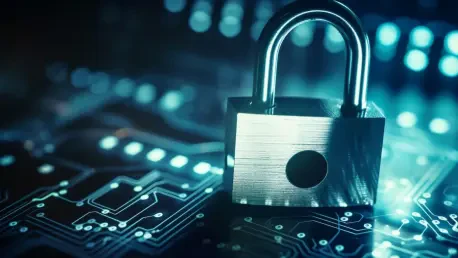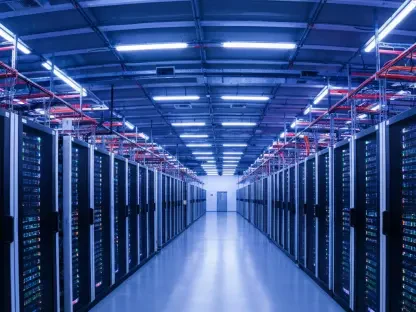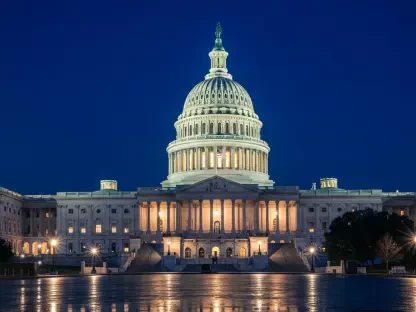With his extensive background in policy and legislation, Donald Gainsborough is a leading voice in the discussion around the cybersecurity of national infrastructure. As the head of Government Curated, he offers a unique perspective on the adequacy of current protections in place.
Can you elaborate on why you lack confidence in the cybersecurity of US infrastructure?
My concern primarily stems from the complexity and interconnectedness of modern infrastructure. Many systems were not originally designed with current cyber threats in mind, and they struggle to integrate necessary security updates seamlessly. The sheer scale and diversity of these systems make it challenging to maintain consistent security protocols across the board.
What specific areas of US infrastructure do you believe are most vulnerable to cyber threats?
Critical services such as energy, water supply, and transportation systems come to mind first. These sectors are essential to daily life and national security, yet they often rely on aging technology and lack comprehensive cybersecurity measures, creating potential points of entry for cyber threats.
What are the primary cybersecurity challenges facing US infrastructure today?
One of the main challenges is the rapid evolution of cyber threats. Attack methods are becoming more sophisticated, often outpacing the ability of infrastructure providers to adapt. Furthermore, there’s a sizable gap in skilled cybersecurity professionals, which makes it difficult to implement and maintain robust defense strategies.
Have there been any recent incidents that have led you to believe the infrastructure isn’t secure?
Yes, there have been several high-profile breaches in recent years. These incidents highlight vulnerabilities within our systems, demonstrating how even seemingly minor security oversights can have significant impacts. They serve as clarion calls for increased vigilance and stronger security measures.
What role does the government play in ensuring the cybersecurity of national infrastructure?
The government is crucial in setting cybersecurity standards and regulations, as well as fostering collaboration between private and public sectors. By funding research and providing resources for infrastructure protection, the government can lead the charge towards fortified cyber defenses.
Are there particular policies or strategies that you think could improve cybersecurity for US infrastructure?
A multifaceted approach combining updated regulations, increased funding for cybersecurity initiatives, and regular audits might be the most effective strategy. We need policies that are adaptable to new threats and are informed by the latest cybersecurity advancements.
How do you assess the current collaboration between private companies and government agencies concerning cybersecurity?
While there are collaborative efforts, they often lack the necessary cohesion and communication to be truly effective. Both sectors need to engage in more open dialogue, sharing information and resources freely to better respond to threats.
Are there any technologies or practices that you believe should be adopted to enhance infrastructure security?
Investment in emerging technologies, like artificial intelligence and machine learning, could significantly enhance threat detection and response times. Additionally, adopting a zero-trust architecture could further protect critical infrastructure by assuming that threats may arise from inside and outside the network.
How can the general public contribute to improving cybersecurity in their everyday interactions with infrastructure?
Raising awareness about cybersecurity risks and promoting best practices in online safety can empower individuals to protect themselves and their communities. Educating the public on recognizing and responding to cyber threats can bolster the overall security posture.
What advice would you offer to local governments regarding protecting their infrastructure from cyber threats?
Local governments should prioritize regular cybersecurity training and ensure they have a response plan in place. Investing in partnerships with cybersecurity firms for risk assessments and developing a robust incident response strategy are also essential steps.
What impact might a cyber attack on critical infrastructure have on daily life in the United States?
A successful attack could disrupt essential services, leading to widespread panic and significant economic loss. Power outages, water supply issues, and halted transportation can deeply impact daily life, emphasizing the need for strong defenses.
How does the US infrastructure’s cybersecurity measure up to that of other countries?
While the US has made significant strides, some countries have taken a more aggressive stance with comprehensive, nationwide strategies. Learning from these international efforts can provide insights into improving our systems.
Are there successful examples of cybersecurity initiatives in other countries that the US could learn from?
Countries like Estonia have implemented advanced digital security measures, creating resilient cyber frameworks that might offer valuable lessons for the US. The key is integrating these successful practices into a cohesive national strategy.
What is the role of education and training in bolstering infrastructure cybersecurity?
Education and training are foundational; they ensure a workforce skilled in cybersecurity practices. Implementing strong programs can help close the skills gap and provide continuous learning as threats evolve.
Can you discuss any futuristic cybersecurity threats that the US infrastructure must prepare for?
As technology advances, threats such as quantum computing and AI-driven attacks could become prevalent. Preparing defenses that can adapt to these changes is crucial for future-proofing our infrastructure.
How does the cookie policy of websites contribute to or detract from cybersecurity efforts?
While cookies help personalize user experiences and improve site functionality, they can also introduce vulnerabilities if not managed properly. Striking a balance between user convenience and security is key.
Can the use of cookies and tracking technologies be aligned with enhancing cybersecurity?
Yes, by implementing robust encryption and clear data management policies, cookies can be used safely. Transparency with users about data usage and providing control over personal information can enhance trust and security.
What measures can consumers take to protect their data while navigating websites with extensive cookie policies?
Consumers should regularly review and adjust their browser settings to limit cookie usage. It’s also wise to use privacy-focused tools and be informed about each site’s data handling practices.









